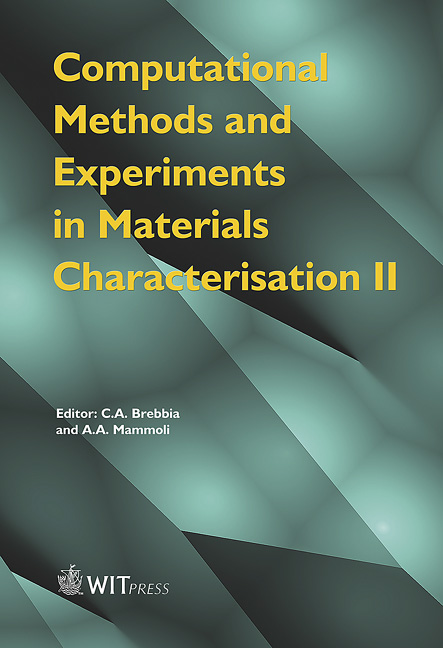Accurate Sintering Morphologies From Monte Carlo Modelling
Price
Free (open access)
Transaction
Volume
51
Pages
9
Published
2005
Size
845 kb
Paper DOI
10.2495/MC050251
Copyright
WIT Press
Author(s)
S. Bordère, D. Gendron, J.-M. Heintz & D. Bernard
Abstract
Through the two-dimensional problems of the sintering of an infinite row and an infinite square arrangement of mono-sized particles, the relevance of the Monte Carlo methodology based on the non-discrete energetical model is pointed out to calculate equilibrium morphologies. In the absence of coarsening, and for the two cases of free and constrained sintering, the calculated stable morphologies are shown to precisely superimpose that obtained from analytical resolution. Therefore, an accurate drawing of surface curvatures and dihedral angles results from that methodology which is one of the required conditions to deal with more complex microstructures and to be able to compare the calculated microstructures with experiments. Keywords: sintering, Monte Carlo simulation, interfaces, microstructure. 1 Introduction Grain scale modelling of sintering processes is still the object of many numerical developments in order to deal with complex microstructures close to real systems. Two main numerical approaches are distinguishable depending on the stochastic or deterministic way to solve the problem. In the field of deterministic methods, the last developments based on the variational principle and the finite element formulation are demonstrated to be efficient to simulate microstructural evolution in polycrystalline materials involving surface and grain boundary diffusion [1]. The phase field modelling is also a very powerful approach to deal with grain growth and non-densifying sintering processes, producing simulated microstructure images indistinguishable from real micrographs [2]. In contrast to the deterministic approach, stochastic modelling minimises an energetical
Keywords
sintering, Monte Carlo simulation, interfaces, microstructure.





